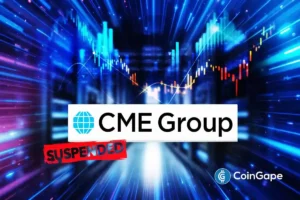The Chaotic Rise and Fall of Monad (MON): A 2000-Word Analysis
The cryptocurrency landscape is no stranger to sudden price movements and influencer-led trends, but the events surrounding Arthur Hayes and Monad (MON) on November 25, 2023, have highlighted the extreme volatility and risks that can accompany low-float projects. In a mere span of seven hours, Hayes’ endorsement and quick reversal of his position sent shockwaves through the market. This article delves into the implications of such rapid changes and the broader context within which MON operates.
What Triggered the MON Surge?
Arthur Hayes, co-founder of the crypto trading platform BitMEX, made headlines when he decided to "ape" into Monad (MON) on November 25. His public endorsement came with a mix of sarcasm and excitement, stating, "It’s a bull market…!" This tweet catalyzed a 30% intraday rally, pushing MON’s price close to $0.048. However, just seven hours later, Hayes shocked his followers with a rapid about-face, urging them to "send this dogshit to ZERO." This swift turn didn’t just confuse his followers but also ignited discussions around the potential pitfalls of investing in tokens with low circulating supplies.
Analyzing MON’s Volatility
Despite a fully diluted valuation of $4.09 billion, MON’s extreme volatility can be primarily attributed to its circulating supply of just 10.83 million tokens. This low float creates conditions where even small capital inflows can result in significant price swings. The combination of a limited supply and a high market cap creates a structural scenario that allows influencer sentiment, like that of Hayes, to influence the entire market cap swiftly. This phenomenon becomes even more dangerous when combined with the speculative nature of many crypto traders who are often swayed by social media activity.
The Backlash Against Hayes
Following Hayes’ abrupt exit from MON, the crypto community was rife with mixed reactions. Some traders speculated that he had manipulated the market for a short-term gain, leveraging MON’s thin liquidity for his profit. Others viewed this as a cautionary tale validifying their concerns around the sustainability of tokens with such low float and high FDV. The swift reversal not only shook the confidence of investors but also underscored the risks associated with trading tokens that lack robust underlying fundamentals.
A Classic Pump-and-Dump Pattern
A closer examination of MON’s price action reveals a classic pump-and-dump scenario. The timeline shows a sharp rally starting on the late hours of November 24, with momentum carrying through to a peak near $0.048 by the morning of the 25th. Following Hayes’ tweet and subsequent sell-off, MON’s price began to retreat toward the $0.040 mark. Despite this turbulence, as of November 27, prices stabilized around $0.04204—still reflecting a 59% jump from its listing price. However, these short-term swings may not provide a stable foundation for the token going forward.
Future Prospects: What Lies Ahead for MON?
Looking ahead, MON remains a focal point for different narratives, including speculation on potential Tier-1 exchange listings and anticipated airdrops for ecosystem participants. The token is currently trading on Bybit and Gate.io, with active discussions about its long-term viability amid growing market saturation. Critical technical levels for MON are emerging, with support now at $0.040 and resistance between $0.045 and $0.048. Investors are particularly vigilant, as a break below $0.040 may reinforce Hayes’ bearish sentiment, while reclaiming $0.048 might temporarily revive bullish momentum.
The Broader Market Implications of MON’s Structure
MON’s troubling supply structure and extreme volatility are not outliers but rather reflections of broader market behavior in crypto. As more tokens unlock and early investors look to exit, MON could face persistent selling pressure that even influencer endorsements cannot offset. In a landscape increasingly filled with low-float tokens, the events observed with Hayes and MON serve as a crucial reminder to discern hype from underlying value in cryptocurrency investments. As the market evolves, the necessity for more robust frameworks for evaluation and risk assessment in token investments will become even more paramount.
In conclusion, the saga of Arthur Hayes and Monad has been a rollercoaster that underscores the complexities and dangers of navigating the crypto market. As speculators eye the next move for MON, the events of November 25 serve as an important case study in the impacts of influencer sentiment, market structure, and the inherent risks that accompany low-float cryptocurrencies.
















